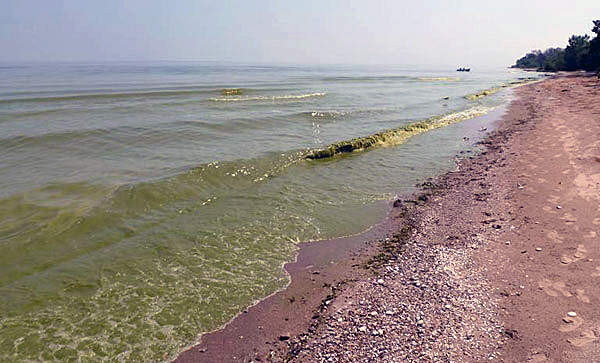Board Recommends Actions to Reduce Risks from Algal Blooms
- Share
- Tweet
- Pin
- Share

In a new report, the Health Professionals Advisory Board (HPAB) of the International Joint Commission (IJC) outlines several actions to augment and improve efforts to monitor and control human risks from exposure to cyanobacteria and its associated toxins, which are often present in harmful algal blooms in the Great Lakes during the warmer months.
Some of these blooms produce cyanotoxins that impact the liver, nervous system and skin in humans and animals. The incidence and type of cyanobacterial algal blooms are expanding throughout the Great Lakes as a result of increased nutrient pollution and climate change throughout the region. Recent testing suggests that cyanobacteria species common to the southern United States can now be found the Great Lakes basin.
The board identified several challenges to maintaining safe waters for recreation and for providing safe drinking water where cyanobacterial harmful algal blooms exist. A standard method to test for multiple bacteria and toxins is not yet available, and considerable gaps in knowledge exist about optimal water treatment strategies for the multiple strains of cyanobacteria and their toxins found throughout the Great Lakes.
Given that the Great Lakes are the source of drinking water for approximately 35 million people and for multiple recreation activities, the board recommends several actions to protect human health: further research and improvements for the removal of cyanotoxins from Great Lakes drinking water; monitor drinking water source cyanotoxins to match water treatment to prevalent cyanotoxins; further research to improve lab testing and establish monitoring methods; establish routine monitoring and modeling in the Great Lakes; and additional toxicity studies to establish protective human exposure limits for the full range of cyanotoxins commonly encountered in the Great Lakes.
The report, Human Health Effects of Cyanobacterial Toxins in the Great Lakes Region: A Science and Monitoring Assessment, is available at ijc.org.

